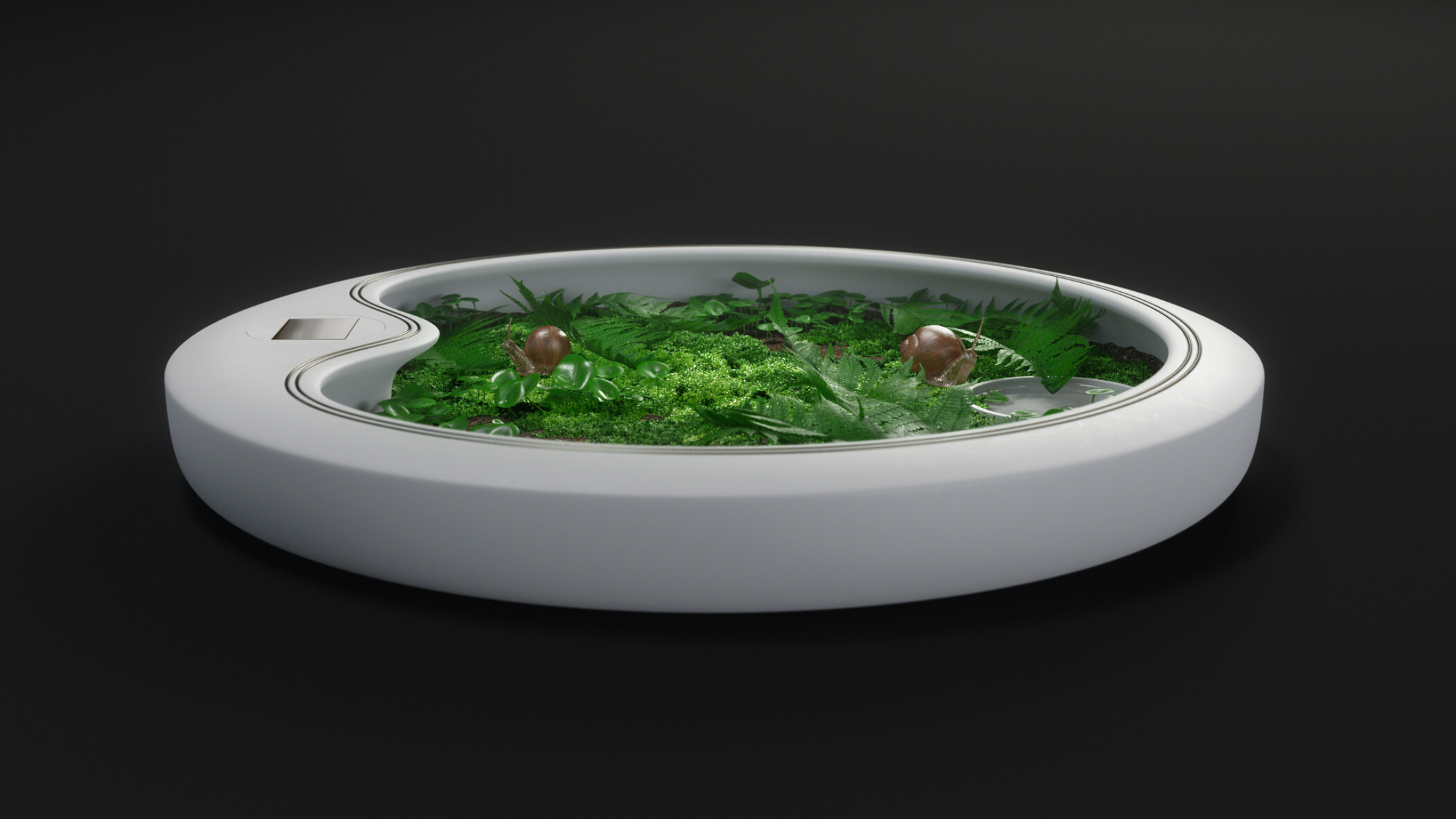https://habr.com/en/post/499022/Hello everybody! Today I want to share with you the concept of a rather unusual device, which, like the alarm remote for the "
ZAZ Zaporozhets", was developed exclusively for creative purposes, without the further implementation.

It all started with the fact that two of the three grape snails escaped from our director's terrarium, and the third one died suddenly without lasting even three days. Obviously, the blame for this situation was putted not on the inability to keep the mollusk and irresponsibility, but on the “terrible terrarium”.
Our development department have participated in the discussion of this incident, and we began to imagine how the ideal terrarium for snails might look and work, without regard to the budget and the need for such a product on the market.

So, for starters, what is a classic snail terrarium from a pet store? As a rule, this is a box made of transparent plastic, with a lid in which there are slots for air. The main problem lies precisely in these walls and the lid. The plastic fogs up, loses transparency over time, snails crawl on all surfaces, dirtying them, and hang under the ceiling closer to air. Therefore, first of all, we thought about how to get rid of the walls and ceiling.
Some time was spent researching the issue of what the snails are mostly afraid of. It turned out that they can be scared away by a weak discharge of current, since this knocks down their internal navigation devices, and they also do not tolerate salt, like Bastinda doesn't tolerate clean water. So, we came to the conclusion that the terrarium itself can be made in the form of a bowl with an electric perimeter.

Two thin copper wires are laid along the outer perimeter of the framework and are powered by a solar panel. In this case, the module with the battery can be used from a conventional garden lamp.
Here's how it works in reality:


It seemed to us appropriate to make the framework itself (eighty centimeters in diameter) of ceramic for small runs and plastic for large runs. A water bowl is installed in the bottom recess, flush with the ground.

There was an idea to smear the inside of the rim with gel and salt to prevent runaway even when the electric perimeter is turned off, but there are fears that such an obstacle may become the last in the snail's life. Although very reliable.

As always, I will be interested to know your opinion about this concept, I will try to answer all questions in the comments. More of my work and concepts are on
Instagram.
P.S. No snail was harmed on the project.






